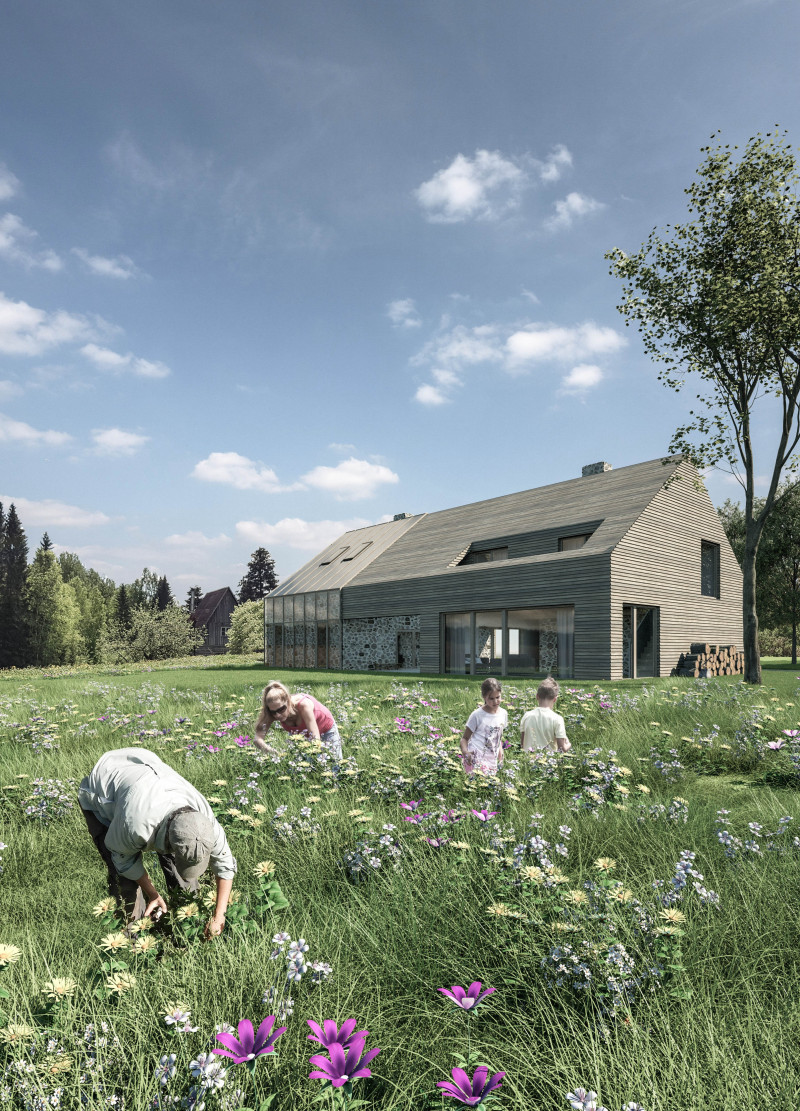5 key facts about this project
Ozolini Farm is set in the peaceful forests of Latvia, a place where nature and relaxation are prioritized. The design centers around creating a guest house that allows visitors to unwind while also learning about the tea-making process. The goal is to create a space that complements the natural beauty of the surroundings and caters to various needs of guests.
Spatial Organization
The layout consists of two main areas: a teahouse for tea production and a guest house for accommodation. This clear division of spaces allows for distinct functions while encouraging interaction through a communal terrace that links both sections. The terrace is designed to foster social connections among guests, enhancing their experience in this tranquil setting.
Sustainable Practices
Sustainability plays a key role in the design. The guest house utilizes Trombe-wall technology to capture solar energy and provide heating without relying heavily on conventional systems. This approach promotes energy efficiency and ensures a comfortable indoor environment without excessive energy use.
Material Selection
The guest house employs a lightweight wooden frame, selected for its flexibility and thermal performance. Pumice stone is used for infill because it effectively stores heat, contributing to the energy efficiency of the building. These materials were chosen to work harmoniously with the local environment and to support ecological principles.
Water Management
Efficient water management is a significant aspect of the project. A rainwater collection system captures and filters rainwater for use in bathrooms and other areas. Gray water is treated and reused, while organic waste is composted, creating a system that reduces environmental impact. This focus on resource management shows a commitment to sustainability.
Large glass panels are incorporated into the design, allowing natural light to fill the interior spaces. This feature enhances the connection between living areas and the outside forest, inviting nature into the daily life of those who visit.





















































